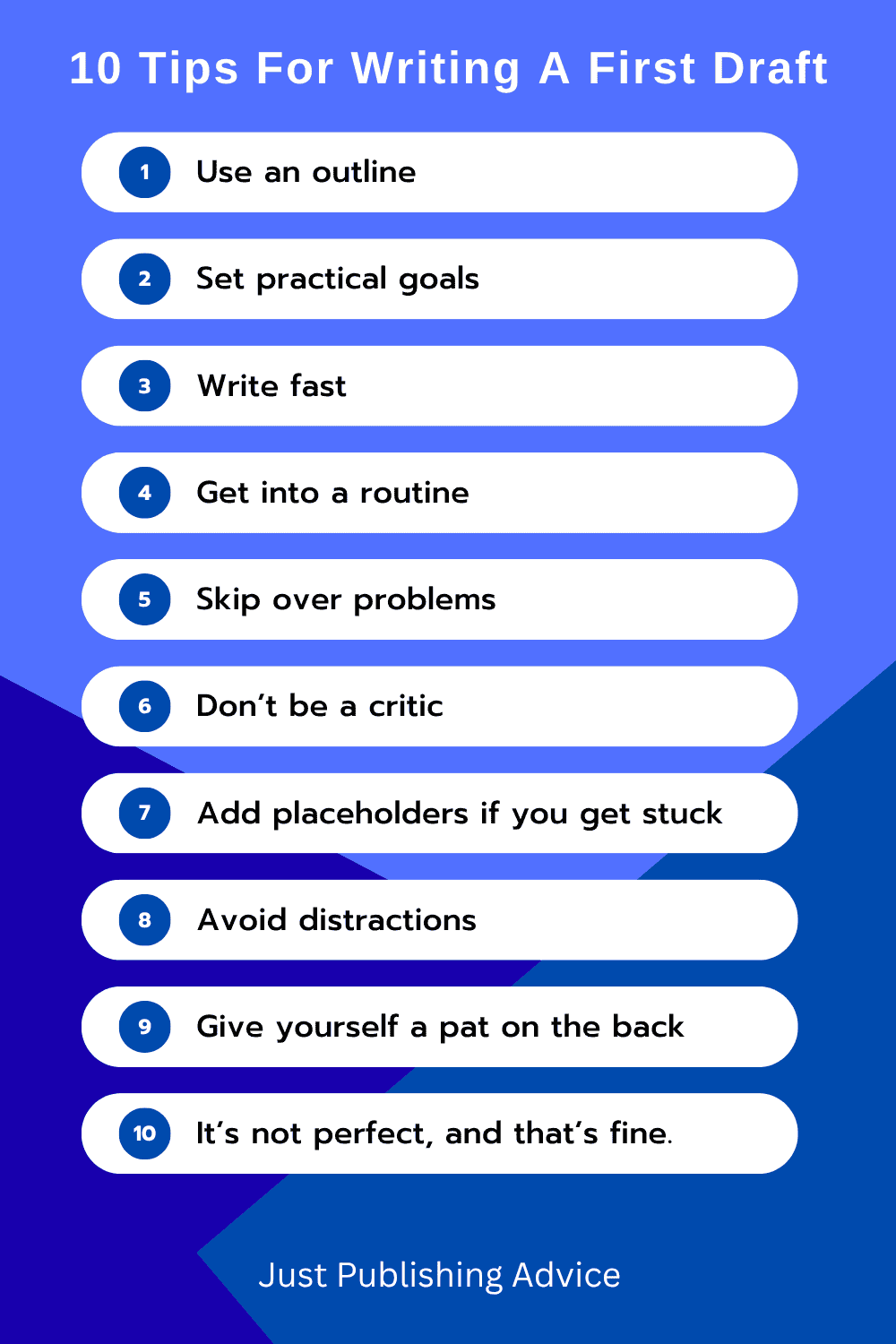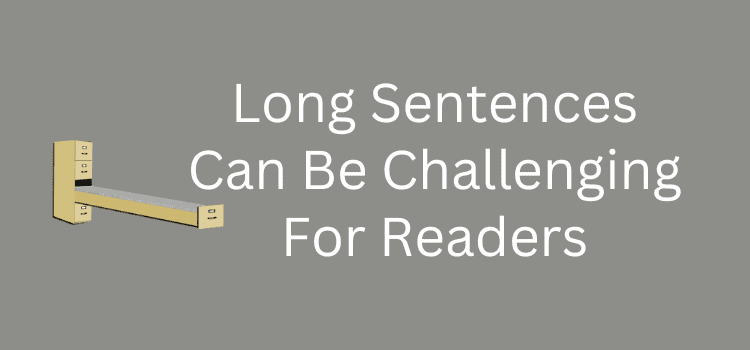
The first draft of a short story, novel, or even an article or poem is only for you.
Terry Pratchett once said, “The first draft is just you telling yourself the story.”
It doesn’t matter if you are a plotter and work with an outline or a panster (a writer who flies by the seat of their pants); you don’t know your story until you write it.
Any form of writing starts with a first word, and then the words that follow is a process of discovery and bringing your writing project to life.
How to tackle your first draft
Until you put some words on a blank page, you have nothing.
But even twenty words is a start, so don’t worry at all about your choice of words; just get them written.
A draft is always rough around the edges. It doesn’t need to be and won’t be perfect. But it has to exist for any writing project to move forward.
The whole aim is to get your ideas into words. If you struggle to begin with, set achievable goals such as five hundred words a day or one hour of writing each day.
Don’t worry if some sentences are a bit “ugly,” too simple, or too complex.
If you find yourself really struggling with a part of your draft, such as a book chapter, write, “I’ll come back to this later,” and move on to the next part.
Another option is to walk away for a while.
Take a coffee break or go for a short walk. When you come back, your mind will be clearer, and the words often flow much easier.
Sure, it’s easier to write a draft for a short story than a novel, but the basics and the goals are the same.
You need to write an initial draft as the raw material for your book, story, essay, or blog post.
10 Tips for writers battling with a first draft
Every writer struggles at times with a draft, so don’t worry if you hit a roadblock. It happens.
Here are ten quick tips that might help you make the process a little easier or move things forward when you get stuck.
1. Use an outline: You can use brief notes or a more complex form, such as a snowflake outline.
2. Set practical goals: Whether you use word count or daily time targets, make sure they are achievable for you. Don’t push yourself too hard.
3. Write fast: Concentrate on getting your ideas out in words as quickly as possible, and don’t worry at all about grammar, errors, or style.
4. Get into a routine: If you can, try to write at the same time every day so your progress becomes a habit.
5. Skip over problems: If you get stuck on one part, move on to another and come back to it later.
6. Don’t be a critic: A draft doesn’t need to be perfect, so don’t think about it critically. It’s only a foundation.
7. Add placeholders: Don’t get bogged down looking for the perfect word order, sentence, detail, or fact. Add a placeholder, move on, and come back to it later.
8. Avoid distractions: Find a quiet place to write, and turn off your Wi-Fi to avoid notifications.
9. Give yourself a pat on the back: Celebrate the little milestones, such as finishing a chapter or hitting a word count goal.
10. It’s not perfect: Nope, it’s not, and that’s just fine.
As you can see, these ten tips are mostly about getting on with it and leaving the fine-tuning until later.
All you need to do is concentrate on finishing it. No matter how good or bad it is.
Now you have something to work with
My favorite part of writing is always completing a first draft. Without one, I would never publish a word.
You could think of it like a sketch for a painter or a rough mold for a potter. It’s nowhere near the finished product, but you can now see what it will look like.
However, it’s always rough and full of mistakes, typos, and missing information.
Even drafting this short article had me skipping parts, leaving blanks, and making notes to follow up.
Sure, it’s easier for an article than a novel, but the process is the same. Get it all out, then worry about the corrections and edits later.
For a short story, poem, or article, you might need two or three draft revisions before you are happy.
Whereas for a novel, memoir, or nonfiction book, you might need many more drafts.
But for any type of writing, short or long, you can’t go anywhere until you grind out that first draft.
Then, you can see what works, what doesn’t, and what you can add, remove, or improve.
Most importantly, especially for a short story or novel, you know how the story ends.
Then, you can go back and make sure everything works in tune with the ending.
Here’s a quick guide you can use. Right-click if you want to download it.

Summary
It will be rough and full of errors in many sentences, and your writing and structure in parts of a first draft might make you cringe.
That’s fine, though, because when you write a draft, it’s for you and only you. You can discover your story but feel safe and secure because it’s not for your readers.
As Pratchett said, you are telling yourself the story for the first time, so it’s a bit like reading a bedtime story. The big difference is that you are writing it and not reading it.
Everything you read, books, articles, short stories, or poems, would not exist without first drafts.
If you want to make your writing happen, get it published, and attract readers, you have to take the first step.
The first drafts of any form of writing can feel like climbing a mountain. However, it’s the only way you can start, so get those first few words out.
Once you do, you’re on your way.
Related Reading: Word Count Guidelines For New Authors And Writers
Share This Article


